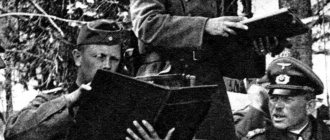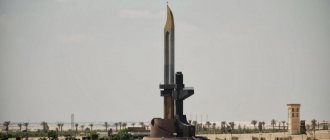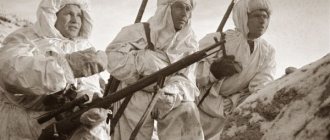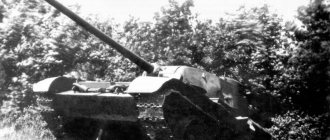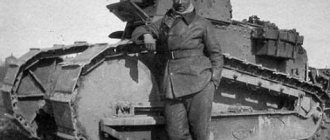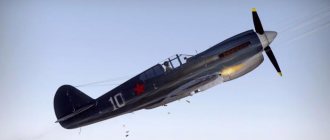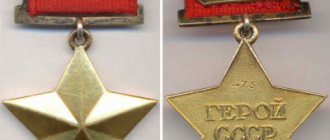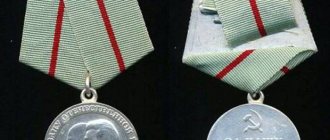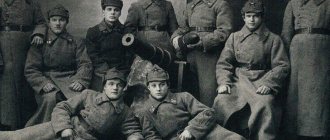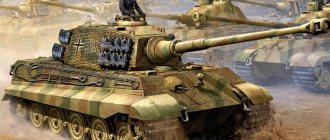The history of such a totalitarian superpower as the Soviet Union contains many both heroic and dark pages. This could not but leave its mark on the biographies of those who carried it out. Kliment Voroshilov is one of these individuals. He lived a long life, which was not devoid of heroism, but at the same time he had a lot of human lives on his conscience, since it was his signature that was on many execution lists.
Kliment Voroshilov: biography
The future famous Soviet military leader was born in 1881 in the village of Verkhny, Yekaterinoslav province (now Lisichansk). His father, Efrem Andreevich Voroshilov, was a railway worker, and his mother, Maria Vasilievna, was a charwoman.
The family lived very poorly, and at the age of 7 Clement began working as a shepherd. In 1893-1895, he attended a zemstvo school in the village of Vasilievka, which he left after 2 years to enter the Yuryev metallurgical enterprise. In 1903, the young man went to Lugansk, where he got a job at the Hartmann locomotive plant.
Participation in the preparation of the revolution
Finding himself among professional workers, young Kliment Voroshilov was involved in anti-government activities. In particular, he was immediately offered to join the ranks of the RSDLP, and the following year he became a member of the Lugansk Bolshevik Committee. During the revolution of 1905, Voroshilov led a strike of workers at local enterprises and organized military squads. He was elected as a delegate to the 4th and 5th congresses of the RSDLP. In 1908, he was sent by the party to Baku, where he conducted underground party work. Upon returning to Petrograd, he continued his revolutionary activities. He was arrested several times and served exile. In particular, he was sent under police supervision to the Cherdyn region of the Arkhangelsk province for several months.
1917-1918
After the February Revolution, Kliment Efremovich Voroshilov was elected a member of the Petrograd Council of the RSD and the Sixth Congress of the RSDLP. Then he was sent to his native Lugansk, where in March 1917 he headed the local Bolshevik committee, and from August - the City Council and the Duma.
During the days of the revolutionary events, he was appointed to the post of commissar of the Petrograd Military Revolutionary Committee for city administration. At the same time, he, together with F. Dzerzhinsky, was actively working on organizing the Cheka.
The aggravation of the situation in Ukraine led to the fact that in March 1918, Kliment Voroshilov returned to his homeland and organized the First Lugansk Detachment, at the head of which he defended Kharkov from German-Austrian troops.
THE ARTISTS THANKED
- That is, he knew how to be noticeable?
— In 1943, he headed the work to create a new national anthem. He led the commission, listened to all the options - although Stalin initially knew what the music would be. The main performer was the Alexandrov Choir. They worked at the Bolshoi Theater, where Voroshilov even listened to foreign anthems. The Kursk Bulge has died down, Ukraine is being liberated, and the Italian anthem, German and American - for comparison - are heard on the stage of the Bolshoi. Of course, we came to the conclusion that the best option was Alexandrov’s music. And of course, Stalin “read” Sergei Mikhalkov’s text, but Voroshilov headed the commission.
— Did Voroshilov love music that much?
— He is perhaps the most productive of the Soviet leaders who influenced popular culture. He created the Song and Dance Ensemble, the future ensemble of Alexandrov. And Stalin sent two groups to the Paris Exhibition of 1937: the Moscow Art Theater with a classical repertoire and the Alexandrov Ensemble. Voroshilov created the Red Army Theater. He was on the commission for academic theaters and influenced the repertoire. He installed his man as director of the Bolshoi and staged two of his favorite operas there - “Quiet Don” and “Virgin Soil Upturned” based on Sholokhov.
- But he didn’t study any arts...
— No, but he encouraged Soviet painting. He loved realistic and portrait painting. He had his favorite artists - Brodsky (a student of Repin), Gerasimov, Katsman. He gave them government contracts. They became very rich people and left a noticeable mark on socialist realism. The brainchild of Voroshilov is the Grekov Battalism Studio. Everyone knows that Vasily Stalin loved football and the Air Force club, but few people remember that the current CSKA grew out of the Voroshilov Red Army Sports Club.
During the Civil War
Kliment Efremovich, who proved himself to be a brave military leader in Ukraine, was soon appointed commander of the Tsaritsyn group of forces. Then his career began to grow, and during the Civil War he held many important positions. In particular, Kliment Voroshilov was deputy commander and member of the Military Council of the Southern Front, led the 10th Army, the People's Commissariat of Internal Affairs of Ukraine, the Kharkov Military District and the internal Ukrainian Front. In addition, he is the organizer and member of the Revolutionary Military Council of the First Cavalry Army.
One of the darkest pages of Voroshilov’s biography was his participation in 1921 in the suppression of the Kronstadt uprising. After these events, he was appointed a member of the South-Eastern Bureau of the Party Central Committee, as well as commander of the North Caucasus Military District.
From 1924 to 1925 he was commander of the Moscow Military District troops and a member of the Revolutionary Military Council of the USSR.
Few people know that during the same period Voroshilov patronized the Bolshoi Theater and was known as a great lover of ballet.
Hero of the Turkish people
As already mentioned, many settlements were named in honor of Voroshilov and monuments were erected in the USSR. But few people know that Voroshilov’s sculpture still adorns one of the central squares... of Istanbul.
In 1928, according to the design of the Italian architect Pietro Canonica , the 12-meter Republic monument was created, installed in Taksim Square. The monument symbolizes the liberating army and the establishment of the republic. The monument in Taksim Square includes sculptures of marshals Mustafa Kemal Atatürk , Mustafa İsmet İnönü and Fevzi Çakmak and figures of ordinary Turks, as well as Kliment Voroshilov.
“The First Red Officer” was included in the sculptural composition on the personal instructions of Ataturk, as a sign of gratitude for the political, military and financial assistance provided by Soviet Russia in Turkey’s independence in 1923.
And if in Russia and Ukraine those Voroshilov figures that have survived face potential dismantling, then Kliment Efremovich will disappear from Taksim Square no sooner than Turkey renounces Ataturk.
At the post of People's Commissar of Defense
After the death of M. Frunze, Voroshilov became chairman of the Revolutionary Military Council of the USSR and headed the country's naval department, and in 1934-1940 - the People's Commissariat of Defense of the Soviet Union.
In total, he spent almost 15 years in this post, which is a kind of record for the Soviet period. Voroshilov Kliment Efremovich (1881-1969) had a reputation as Stalin's most devoted supporter and provided him with effective support in the fight against Trotsky. In October 1933, he went with a government delegation to Turkey, where, together with Ataturk, he attended a military parade in Ankara.
In November 1935, by decision of the Central Executive Committee and the Council of People's Commissars of the USSR, he was awarded the newly established rank of Marshal of the Soviet Union.
After 5 years, he was removed from the post of People's Commissar, as he did not live up to Stalin's expectations during the Finnish War. However, Voroshilov was not dismissed, but was appointed to the post of head of the Defense Committee under the Council of People's Commissars of the Soviet Union.
The legend of the great commander
In 1925, Kliment Voroshilov became People's Commissar for Military and Naval Affairs. He would hold this post, whose name would change to “People's Commissar of Defense” in 1934, for 15 years—longer than any military leader of the Soviet era.
In 1929, Voroshilov, on the occasion of Stalin’s 50th anniversary, published an article “Stalin and the Red Army,” in which he presented the leader as the main “organizer of the victories of the Civil War.” Subsequently, he continued to consolidate Stalin's image as an outstanding strategist and army builder.
At the same time, the process of exalting the merits of Voroshilov himself began, who, along with Budyonny, turned into the main hero of the Civil War. Moreover, if Semyon Mikhailovich really had military leadership talents, then Kliment Efremovich’s successes were born solely thanks to the imagination of Soviet writers.
At some point, not only Stalin and the Soviet people, but, it seems, Kliment Efremovich himself believed in Voroshilov’s great leadership talent.
Joseph Stalin and Kliment Voroshilov. Photo: www.globallookpress.com
Sobering came after the Soviet-Finnish war of 1939–1940. Despite the victory, the campaign was far from brilliant. In severe frost conditions, equipment broke down, troops suffered heavy and unjustified losses not only from enemy actions, but also from diseases and frostbite. But the most important thing was that the organization of combat operations on the part of the command and military planning were at an extremely low level.
Kliment Voroshilov. Photo: www.globallookpress.com
On May 7, 1940, Semyon Timoshenko . Voroshilov, however, also did not suffer, and even received a promotion, as it were, taking the post of deputy chairman of the Council of People's Commissars of the USSR. True, Voroshilov’s powers in his new position were sharply reduced.
Participation of Kliment Voroshilov in Stalinist repressions
In the period from 1937 to 1938, Voroshilov, along with many other representatives of the political elite of the USSR, participated in the consideration of lists of people who were supposed to be repressed with Stalin’s personal sanction. Everyone who hit them was subsequently shot. So, Voroshilov’s signature is found on 185 lists, which included the names of 18,000 people.
As a member of the Politburo of the Central Committee of the All-Union Communist Party, Kliment Voroshilov approved many so-called limits, i.e. quotas on the number of repressed people. In particular, in April 1938, he, along with Stalin, Kaganovich, Molotov and Yezhov, signed an affirmative resolution, according to which for the Irkutsk region the number of people who were subject to execution was increased by 4,000 people.
As People's Commissar of Defense, Kliment Efremovich Voroshilov took an active part in the repressions directed against the command staff of the Red Army, which had catastrophic consequences in the first years of the war. So, on one of the lists, consisting of the names of 26 commanders, he wrote: “To Comrade Yezhov. Take all the scoundrels..."
Career
Under the command of Voroshilov there were many officers who served in the army of Emperor Nicholas II; being an ardent Bolshevik, he did not tolerate everything connected with the tsar, so he did not completely trust his subordinates. Today it is reliably known that Voroshilov in his history as a military leader did not distinguish himself by winning a single significant military battle. It is not surprising that his contemporaries called him a marshal who did not know how to fight. Nevertheless, Kliment Efremovich managed to occupy senior positions in the CPSU Central Committee, receive the highest military rank and head the Military Council for almost 15 years - an absolute record for holding this position.
Voroshilov at work
Voroshilov did not have the skills, experience and talent, such as Semyon Budyonny or Mikhail Frunze, but throughout his life he treated himself with considerable self-criticism, and was also characterized by a complete lack of ambition. For Lenin and even more so for Stalin, who were surrounded by obvious careerists, Kliment Efremovich stood out favorably and created a pleasant impression.
Participants of the revolutionary military council
Voroshilov did not take part in the great battles with the White Guards, but, despite this, he was a member of the Revolutionary Military Council of Petrograd, which means he participated in the seizure of power in October 1917. After the end of the revolution, Voroshilov served for some time as commandant in Petrograd, but after some time he was sent home to Lugansk to control the establishment of Bolshevik power in this region. In his hometown, Kliment Efremovich created a military detachment of a couple of hundred people, which became his main support.
At the head of his detachment, Voroshilov attempted to capture Kharkov, but was forced to retreat under the terms of the Brest Peace Treaty, which provided for the occupation of part of Ukraine by the Germans. The detachment was joined by scattered detachments of Bolsheviks who fled with their families from occupied Ukraine to Soviet Russia. On several dozen echelons, all detachments went to Tsaritsyn. Voroshilov only formally commanded the people; all detachments had their own ataman, to whom the Cossacks obeyed. The echelons were overloaded, the country was destroyed after the revolution and war, a distance of no more than five kilometers was covered per day, and Voroshilov and his troops reached Tsaritsyn only a few months later.
Voroshilov and Stalin during a conversation
By that time, a large army of Bolsheviks had already been assembled in the city, and preparations for the defense of Tsaritsyn from the army under the command of Krasnov were in full swing. It was here that Voroshilov won his first political victory, becoming close to Joseph Stalin, further contributing to the rise of the future leader of the peoples.
The defense of Tsaritsyn was commanded by Trotsky’s protege Snesarev, who had previously served as a general in the tsar’s army. After Snesarev’s arrival with instructions, three weeks later Stalin also arrived from the center, who was supposed to be engaged in sending food to Moscow. A conflict arose between Stalin and Snesarev; Joseph Vissarionovich did not like Trotsky and all his associates. Stalin began to arbitrarily interfere in the leadership of defense preparations. Military specialist Snesarev was outraged by such impudence and declared the inadmissibility of leading amateurs and partisans.
Voroshilov and Stalin at a party meeting
Stalin, in turn, accused Snesarev of lack of decisiveness and reported this to Moscow. The military specialist was recalled, and General Sytin took command of the city’s defense. But even such personnel changes did not suit Stalin; together with Voroshilov, they refused to obey and created their own headquarters. The commander-in-chief of the Red Army, Trotsky, was outraged by the initiative and complained to Lenin, but this did not help. Stalin stated that he would not obey Trotsky’s orders, since he was not on the spot and did not know the real situation, therefore, he would decide personally how to do the right thing and what was needed for the revolutionary cause.
Photo of K. E. Voroshilov during the Civil War
General Sytin understood perfectly well that he was in the midst of a showdown between politicians and chose to withdraw himself. Lenin was forced to constantly listen to the complaints of either Trotsky or Stalin, but decided to support the latter. As a result, Stalin and Voroshilov began to lead the defense of Tsaritsyn, although in reality Kliment Efremovich was the commander only nominally, Stalin was in charge of everything.
From that moment on, Voroshilov’s main role was determined, to be Stalin’s eternal companion and assistant. What united two different people was their dislike for military experts. Voroshilov was confident that after studying for three years at the zemstvo school, he would be able to command troops no worse than the generals of the tsarist army who graduated from universities and academies. Because of his beliefs, he even became a member of the military opposition, created in 1919 by a group of military leaders with similar thoughts. Their motivation was the recognition of the partisan movement and the removal of military experts. However, Lenin spoke extremely negatively about partisanship, and Voroshilov himself was publicly reprimanded by the leader. As a result, Kliment Efremovich made the appropriate conclusions and subsequently tried to support Stalin’s line so as not to find himself in an unpleasant position again.
Voroshilov on Red Square
From the beginning of the 20s, Voroshilov was entrusted with commanding the troops of the North Caucasus Military District, after which he was transferred to the Moscow Military District. After Mikhail Frunze died, Clement began to head the Military Council of the USSR. During the “Great Terror”, Kliment Efremovich was directly involved in the consideration of the list of persons subject to repression. Voroshilov's personal signature appears at the end of 185 lists of people sentenced to death. By order of the People's Commissar of Defense, more than 170 Red Army officers were arrested and then shot.
During the Great Patriotic War
Since the beginning of the war, K. E. Voroshilov, being a member of the State Defense Committee, also held the following positions:
- commander-in-chief of the troops of the North-Western direction (until 09/05/41);
- commander of the Leningrad Front;
- representative of Headquarters for the formation of troops;
- head of the Trophy Committee under the State Defense Committee;
- commander-in-chief of the partisan movement;
- Chairman of the Armistice Commission.
“After all, Voroshilov, the first red officer, is with us...”
By the beginning of the Great Patriotic War, Kliment Efremovich Voroshilov had experience of commanding armies during the Civil War. He took part in the suppression of the Kronstadt uprising, and later commanded the troops of the North Caucasus and Moscow military districts. In 1934-1940 he was the People's Commissar of Defense of the USSR. In July 1941, Marshal of the Soviet Union K.E. Voroshilov took command of the troops of the North-Western direction. In this position, he had to solve complex problems and make difficult decisions. Not all of them were successful.
In the North-West direction
For the troops of the Leningrad Military District under the command of Markian Mikhailovich Popov, the Great Patriotic War did not begin simultaneously with the surprise attack of Germany in the early morning of June 22, 1941. Combat operations on the land front against the Finns began only a few days after June 26.
Kliment Efremovich Voroshilov
This did not mean that the district, transformed into the Northern Front in June 1941, had to fight in “hothouse” conditions. There were many problems from the very beginning. The cover plan required strong defense of the state border line, and the presence of more advantageous lines deep in Soviet territory was not taken into account. Because of this, the 23rd and 7th armies of the front found themselves stretched along the border. Thanks to this, the Finnish command could choose the direction of the attack and deliver it in the most advantageous place for itself. In addition, it soon turned out that the main threat to Leningrad came not from the north, but from the south.
One of the features of the summer campaign of 1941 was the creation of the Main Commands of the Directional Forces. By orders of Headquarters, people who were part of Stalin’s inner circle, his faithful associates, were appointed to these bodies of strategic leadership.
Kliment Efremovich Voroshilov was to lead the actions of the Northern and Northwestern fronts. He knew the situation in the North-West direction well, because during the war with Finland he was located right here, on the Karelian Isthmus. Despite all the complaints against him as a leader, as well as the fact that Semyon Konstantinovich Timoshenko became People's Commissar of Defense, Voroshilov largely retained his political positions and by the summer of 1941 was still part of Stalin's inner circle.
The Main Command of the North-Western Direction solved a wide range of tasks. At the same time, it was necessary to ensure the defense of Leningrad from the north and south, coordinating the actions of two fronts at once over a vast area, building defensive lines, and solving the problems of forming new units and formations. The problem of fighting German tanks was very acute. Even then, in July 1941, it was decided to remove some of the anti-aircraft guns and use them as anti-tank guns.
Voroshilov’s order of July 14, which contained many big words, was rather a political and propaganda document. True, at the same time, the High Command, headed by the Marshal of the Soviet Union, took decisive measures to organize a counterattack near Soltsy.
Against the Finns
From the very beginning, the Commander-in-Chief of the North-Western Direction strictly adhered to the tasks that were formulated in the cover plan. In July, he did not allow the commander of the 7th Army, Philip Danilovich Gorelenko, to withdraw his troops to a more advantageous line. After the counterattack near Soltsy, the command tried to help Gorelenko: for some time the position of his troops was stabilized. It will become critical later, when Voroshilov no longer has anything to do with it.
Voroshilov played an extremely unseemly role in the case of Konstantin Pavlovich Pyadyshev, the first commander of the Luga operational group. After the Germans managed to capture bridgeheads on Luga, Pyadyshev was arrested. It was Voroshilov and member of the Military Council of the North-Western Direction Andrei Aleksandrovich Zhdanov who insisted on his arrest.
Vyacheslav Mosunov
/
Vyborg sector: defense
Actions of units of the Vyborg coastal defense sector of the Baltic Fleet in August 1941
- WWII
- fleet
- USSR
- Finland
Strikes from enemy troops literally rained down from all sides. In the defense zone of the 23rd Army in the east of the Karelian Isthmus, the Finns began an offensive. At the beginning of August, a very difficult situation developed here. The headquarters of the Northern Front, headed by M.M. Popov proposed a number of measures that could, if not correct the situation, then at least give a chance for a more or less strong defense. However, the Main Command of the North-Western Direction demanded a strong hold on the cut-off Sortavala and prohibited the transfer of the 168th Infantry Division to the Hiitola area. True, Sortavala no longer had any significance. The Finns began to dismember the group of the 19th Rifle Corps, and there was a threat of encirclement. However, the High Command again did not give permission for the removal of troops in order to form a new line of defense along an advantageous line.
Finnish advance on the Karelian Isthmus
In the end, the troops had to be withdrawn anyway, and the Finns were able to maneuver and make a breakthrough in the center of the Karelian Isthmus with access to Vuoksa and the possibility of encircling the troops of the 23rd Army in the Vyborg area. The “architects” of the Vyborg disaster were also employees of the Main Command of the North-Western Direction. Later, Headquarters prohibited M.M. Popov to withdraw his troops, which led to a severe defeat, which could have decided the fate of Leningrad and seriously changed the course of the entire war.
Against the Germans
As for the counterattack near Staraya Russa in August 1941, K.E. Voroshilov had no significant involvement in its organization and conduct. The counterattack turned into a serious defeat, which in no way weakened the German onslaught on Leningrad.
But near Luga the situation was different. Already on August 19, 1941, the Germans had every opportunity to cover the Luga operational group, and the headquarters of the Leningrad Front understood this. Staff members predicted the Germans would turn from Krasnogvardeysk to the southeast and the enemy would reach the rear of the Soviet troops. There was a threat of encirclement of the Soviet group. In this situation, withdrawal from the Luga area was allowed, but only on the condition of occupying the defense line along the Luga and Oredezh rivers. But with this situation, the troops continued to remain in the forming pocket! Here the fault was common - both the front command and K.E. Voroshilov, and Stavka. Voroshilov himself was a conductor of the ideas of Headquarters, and they were often divorced from the real state of affairs.
Markian Mikhailovich Popov
At this critical moment, the front headquarters tried to somehow interfere with the enemy advancing along the October Railway to Leningrad. Apparently, the front commander M.M. showed the greatest concern here. Popov. And Voroshilov at the end of August 1941 wrote to Stalin about the plans of the North-Western Front, noting that he must defeat the enemy in front of him. Considering that by this time the counterattack at Staraya Russa had ended in a heavy defeat, it is not entirely clear how this task was supposed to be carried out. True, the activity of the Northwestern Front to some extent forced the enemy to reckon with the Soviet troops. The LVII Motorized Corps was transferred here, which turned out to be a major mistake by the German command.
On the Leningrad Front
The next stage of Voroshilov’s activity is associated with his tenure as commander of the Leningrad Front in September 1941. To the previous front commander M.M. Popov had a lot of complaints that were voiced through special departments: all his actions were presented as almost treasonous. L.P. played a major role in the intrigues against Popov, as well as in the negative presentation of his activities. Beria, who extremely harshly assessed the actions of the front commander. The Main Command of the North-Western Direction was disbanded. MM. Popov was removed from his post, and K.E. was appointed commander of the Leningrad Front instead. Voroshilov. For a while M.M. Popov became the chief of staff of the front, but Stalin demanded that he be removed, which was done.
By the time Voroshilov took office, the situation at the front was very difficult. The Germans were already standing along the Izhora River, some ten kilometers from Kolpino. To the west there were battles near Krasnogvardeysk, and the German 18th Army was advancing along the Tallinn Highway towards Leningrad. It was necessary to take measures to withdraw units of the Luga operational group from encirclement.
The general course of the German offensive on Leningrad
Only on the Karelian Isthmus the situation has more or less stabilized. There were no large-scale battles there, except for the episode at Beloostrov. The worst thing was that the railway connection between Leningrad and the mainland had already been interrupted. Everything had to be done to recapture the Mga station. Voroshilov made some efforts to organize the battles for Mgu, and until September 6 they had a certain effect. The measures he took seemed somewhat delayed, but a careful analysis of German documents makes it clear that they responded to the situation.
On September 6, the enemy strengthened its grouping, aviation of the VIII Air Corps began to strike Soviet troops, a communications center in Shlisselburg was bombed - the situation began to deteriorate sharply. Control of the troops on the left bank of the Neva was lost. Nobody really knew what was actually going on there. The headquarters of the Leningrad Front did not have time to report to the top about the loss of Shlisselburg. They just reported to the General Staff that
«There was no information about the position and combat operations of the 48th Army. It is known that the 1st Rifle Division of the NKVD, having suffered losses of up to 70 percent, retreated with the main forces to the Dust Mill and with one regiment crossed to the eastern bank of the river. Neva at Kuzminka."
On September 9, the Germans had already gone on the offensive. The 18th Army and the 4th Tank Group began the final push towards Leningrad. The front headquarters did not have time to prepare to repel this attack. The control system began to fall apart. Voroshilov incorrectly assessed the scale of the German offensive; at headquarters it was perceived almost as reconnaissance in force. On September 10, two advancing German corps broke through the defenses of the 42nd Army. Voroshilov was going to counterattack the German tanks and infantry with the forces of sailors collected from the pine forest, consolidated into the 1st Marine Brigade, as well as a tank battalion and several other units. All this happened in conditions when the front of the 42nd Army was collapsing and control of the troops was lost.
Voroshilov apparently believed that it would be better if he began to show up on the battlefield. At least there is isolated evidence of his appearance at the front.
Marshal K.E. Voroshilov (center) on the podium during the parade on November 7, 1941 in Kuibyshev (Samara). waralbum.ru
After the publication of I.M.’s memoirs on the Internet. Petrov’s story about how Voroshilov led the soldiers of the 1st Marine Brigade in an attack near Krasnoye Selo on September 11 began to be called fiction. Most likely, this “fiction” had a real basis, traces of which are found in separate documents of the Political Directorate of the Red Banner Baltic Fleet.
On the same day, September 11, an order came to remove Voroshilov from front command and appoint Georgy Konstantinovich Zhukov instead. The next day G.K. Zhukov, M.S. Khozin and I.I. Fedyuninsky arrived in Leningrad. By this time, Voroshilov had a plan of action in his hands, which no longer corresponded to the current situation, but served as the starting point for the actions of the new front commander.
It must be admitted that in the first months of the war, Voroshilov found himself in a very difficult situation. The enemy had the initiative; it was necessary to defend a vast area under very unfavorable opening conditions. The frankly unsuccessful cover plan, which was impossible to implement in practice, also played a role, depriving the troops of the opportunity to maneuver. At the same time, Voroshilov was a relay of the ideas of the Supreme Command Headquarters and personally I.V. Stalin. And in conditions when even the front command had poor control of the situation, higher authorities simply could not adequately respond to the developing situation.
Vyacheslav Mosunov
/
Before the storm
At the end of 1941, the views of German generals on further actions near Leningrad ranged from capturing the shores of Lake Ladoga to retreating to the Pskov-Narva line
- WWII
- strategy
- USSR
- Germany
Vyacheslav Mosunov
/
Behind enemy lines across the ice of Ilmen
In February 1943, during Operation Polar Star, three Soviet ski brigades made a daring raid on the German-occupied southern shore of Lake Ilmen.
- WWII
- USSR
- Germany
Oleg Kiselev
/
If tomorrow there is a war, if tomorrow there is a campaign...
Fighter aircraft of the Air Force of the Leningrad Military District on the eve of the Soviet-Finnish War
- aviation
- USSR
- Soviet-Finnish war
Sources and literature:
- Documents from the Central Archive of the Ministry of Defense (TsAMO RF).
- The Siege of Leningrad in documents from declassified archives / ed. N.L. Volkovsky. - M., 2005.
- Isaev, A.V. Other 1941. From the border to Leningrad / A.V. Isaev. - M., 2011.
- Mamonov, O. Stopped blitzkrieg / O. Mamonov. - V. Novgorod, 2011.
- Petrov, M.I. In days of war and peace / M.I. Petrov. - M., 1982.
- Oleynikov, G.A. Heroic pages of the Battle of Leningrad. Study of the progress and analysis of some operations and battles on the Northern (Leningrad) and Volkhov fronts in 1941–1942. / G.A. Oleynikov. - St. Petersburg, 2000.
Death and funeral
Kliment Voroshilov, whose career growth stalled in the last decades of his life due to the infirmities of old age, died on December 2, 1969 at the age of 89. The marshal was buried in the capital, near the Kremlin wall, on Red Square. According to contemporaries, this was the first such large-scale funeral ceremony for a USSR statesman in the twenty years that passed after Zhdanov’s funeral.
Unsinkable
Despite everything, Voroshilov remained in Stalin’s immediate circle until the last days of the leader’s life. And, what is even more surprising, it remained afloat even after his death. In 1953, Voroshilov promptly joined Khrushchev’s , and as a reward for this he received the post of nominal head of state, becoming chairman of the Presidium of the Supreme Soviet of the USSR.
But in 1957, Voroshilov made a miscalculation by joining those who advocated Khrushchev’s resignation. That time Nikita Sergeevich stood his ground, and his opponents, declared an “anti-party group,” were defeated, saying goodbye to power. Kliment Efremovich managed to get away with it here too, having repented of his “misconceptions” in time.
Perhaps Khrushchev considered that Voroshilov, whose age was approaching 80, did not pose a serious threat.
That’s exactly how it was. After the death of his wife in 1959, Voroshilov began to devote most of his time to memoirs and meetings with people, rather than to current political issues.
The last years of Voroshilov’s life also saw his highest awards - in 1956 he became a Hero of the Soviet Union (in honor of the 75th anniversary), in 1960 - a Hero of Socialist Labor, and in February 1968 he became twice a Hero of the Soviet Union (in honor of the 50th anniversary USSR Armed Forces).
These awards, by and large, related to the myth, and not to the real person, who completely disappeared behind the painted image.
In the early 1920s, Soviet leaders and their families lived in the Kremlin. Gradually, one by one, they moved to comfortable apartments with all the amenities in Moscow. Voroshilov was the last one to have a residence permit in the Kremlin. The marshal finally moved only in 1967, a couple of years before his death.
Kliment Efremovich Voroshilov died on December 2, 1969 at the age of 89. The funeral of the legend of the Red Army was held on a grand scale - Voroshilov became one of the few who were given a separate grave at the Mausoleum, and were not buried in a niche of the Kremlin wall.
Family and Children
The wife of Voroshilov Kliment Efremovich - Golda Davidovna Gorbman - was of the Jewish religion, but for the sake of the wedding with her beloved she was baptized and took the name Ekaterina. This act aroused the anger of the girl’s Jewish relatives, who even cursed her. In 1917, Ekaterina Davidovna joined the RSDLP and for many years worked as deputy director of the V. I. Lenin Museum.
It so happened that the friendly Voroshilov family did not have their own children. However, they took in the orphaned children of M.V. Frunze: Timur, who died at the front in 1942, and Tatyana. In addition, in 1918, the couple adopted a boy, Peter, who later became a famous designer and rose to the rank of lieutenant general. From him the couple had 2 grandchildren - Vladimir and Klim.
Love for life
Special mention must be made about the Voroshilov family. In 1909, revolutionary Golda Gorbman . She fell in love so much that, being a Jew, she decided to convert to Orthodoxy - a marriage between lovers at that time could only be ecclesiastical. For this act, her family cursed her, but Golda, who became Catherine after baptism, was ready to make even such a sacrifice.
Kliment Efremovich Voroshilov can be reproached and accused of many things, and rightly so, but in family life he was an example to follow. Klim and Ekaterina married in 1910 and remained together for almost half a century, until her death. Historians who have studied the correspondence of the spouses admit that throughout their lives they maintained love for each other.
Catherine could not have her own children - an abortion made in her youth, which was the consequence of a passionate romance that occurred even before meeting Voroshilov, took its toll. Klim resigned himself and never reproached his wife for this. In 1924, the Voroshilovs adopted an orphan boy, then took Mikhail Frunze to raise the children. All her life, Ekaterina Voroshilova provided her husband with a strong and reliable rear.
In the early 1950s, doctors discovered she had cancer. She asked the doctors to hide her illness from her husband, trying not to give away her slow decline. When she died in the spring of 1959, for Voroshilov it was a much more terrible blow than all the political upheavals.
Awards
Klim Voroshilov is a recipient of almost all the highest awards of the USSR. Including, he twice received the title of Hero of the Soviet Union.
He has 8 Orders of Lenin and 6 Orders of the Red Banner and many other awards, including from foreign countries. In particular, the military leader is a hero of the MPR, a holder of the Grand Cross of Finland, and also an honorary citizen of the Turkish city of Izmir.
